Casey Reading Center
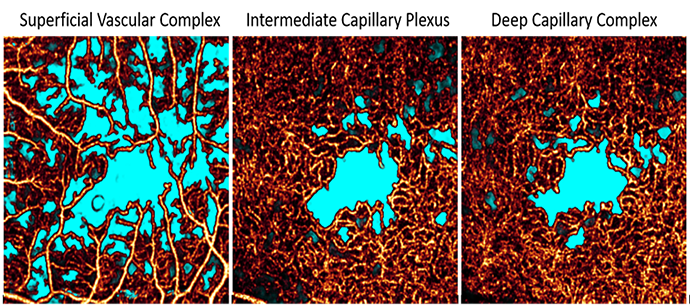
Providing comprehensive, high quality and insightful image reading services
The Casey Reading Center (CRC) is a comprehensive ophthalmic reading center providing custom support to clinical sites with data acquisition, endpoint development, custom analysis for Sponsors, and insightful image reading services. It offers a secured image transmission platform and sophisticated functional and imaging analysis to ensure the highest quality and insight from clinical trials.
The CRC has extensive experience providing detailed guidance to clinical sites, certifying study technicians, and acquiring trial files/ images with appropriate quality standards based on the study's requirements to collect insightful information and ensure data integrity.
What we do
Expertise
Custom clinical support and guidance
- Clinical site manual and guidance for image/file acquisition.
- Custom grid development and installation for perimetry file acquisition.
- Site technician's software training.
- Site certification for staff and equipment.
Custom analysis
- Custom endpoints development and analysis.
- Manual of procedures development based on custom endpoints.
- AI assisted quality image and file acquisition.
- AI and automated reading services.
Services avalable
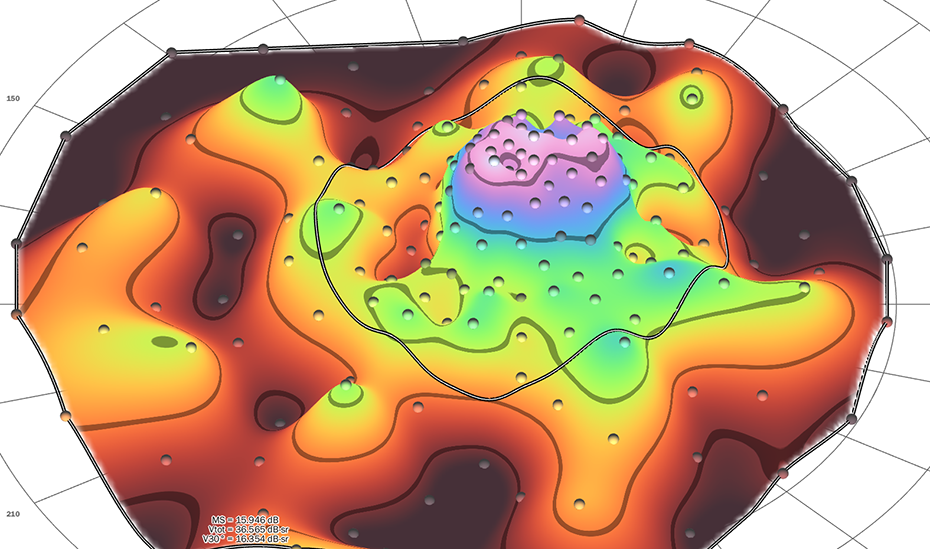
The Casey Reading Center (CRC) draws on more than 30 years of Casey Eye Institute's experience in perimetry, provides OHSU proprietary Visual Field Modeling and Analysis (VFMA),1 the most advanced topographic analysis of the visual field.
VFMA renders 3D surface models of the hill of vision (HOV) and its defects, providing quantitative functional measures.
CRC has provided VFMA data for many clinical trials targeting various inherited retinal diseases.2 We also provide custom visual field testing grid patterns based on the need of the trial.
—
1. Weleber RG et al. Transl Vis Sci Technol. 2015 Apr 28; 4(2):14.
2. Smith TB, et al. PLoS One. 2016 Apr 13;11(4).
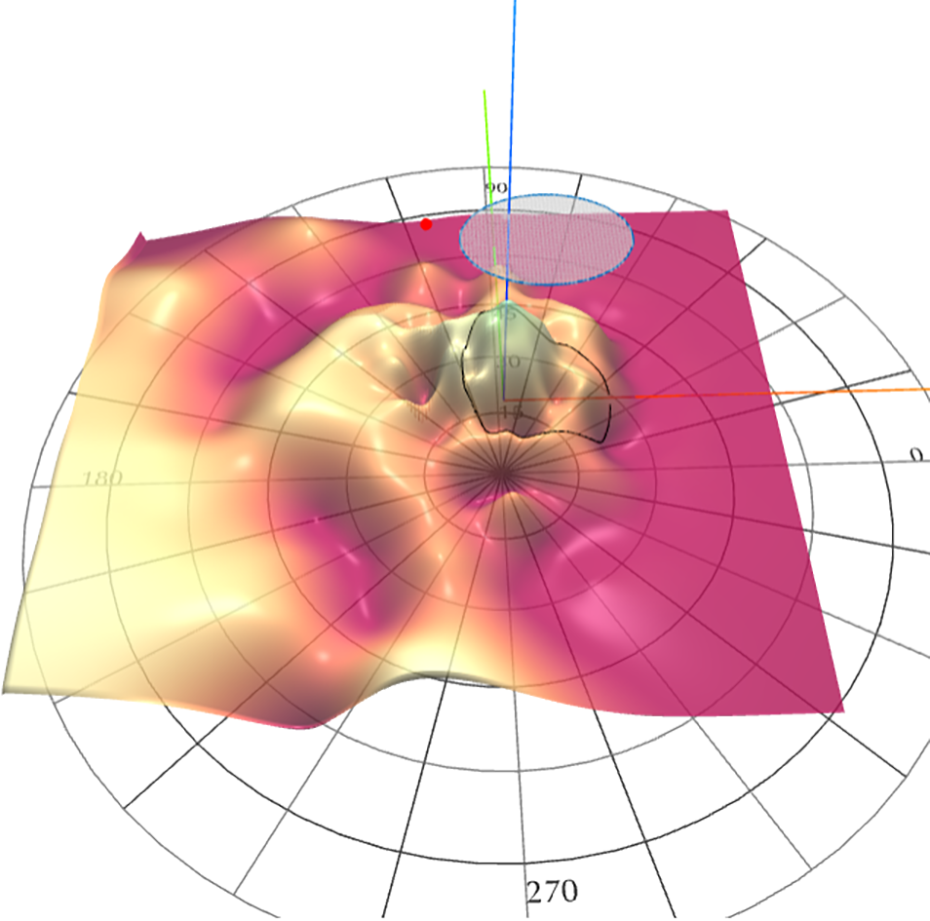
The CRC has developed VFMA Overlay Tool, a proprietary novel software for Structure-Functions Assessment for clinical trials.
3D topographic surface analysis of HOV superimposed over corresponding OCT en face image allows the CRC to visualize precisely registered spatial relationship between structure and function as well as assess the longitudinal changes in function at a region of interest in the retina.
One of the useful applications of the Overlay software is to assess retinitis pigmentosa cases after gene therapy using viral vectors. HOV overlay allows measuring the functional changes within and/or outside the ‘bleb’ (vector injection site).
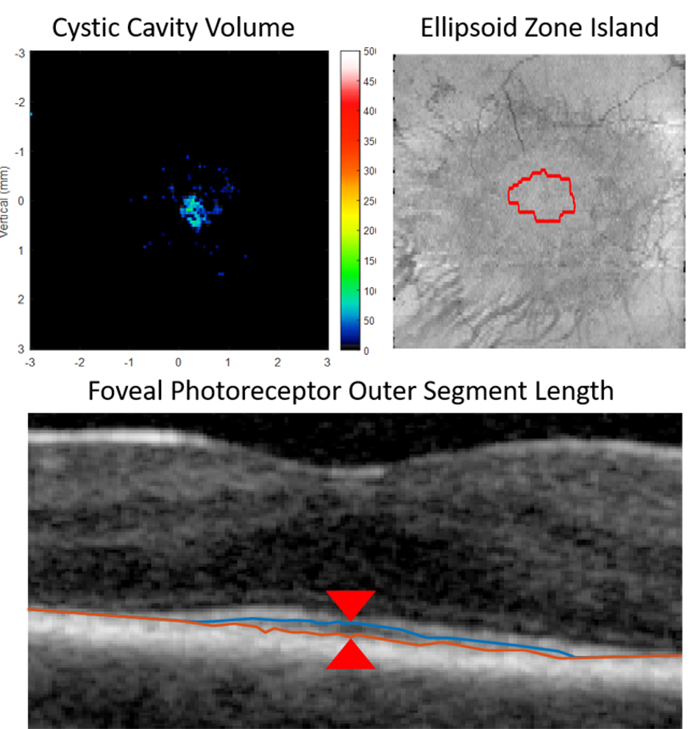
Custom OCT biomarker quantification
- Retinal fluid quantification
- Ellipsoidal zone
- Outer segment length
Calculating cystic cavity volume, ellipsoid zone boundary detection, and quantification of foveal photoreceptor outer segment length.
Retinal fluid quantification
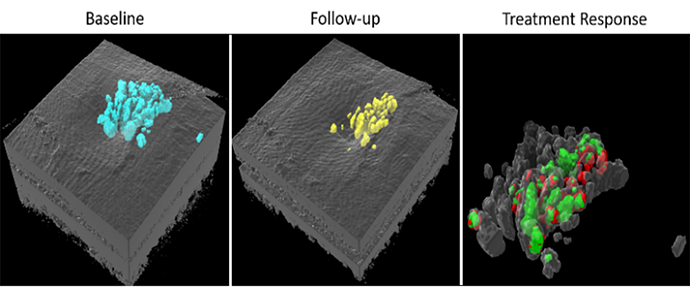
Our deep learning based fluid segmentation algorithm uses OCTA information together with structural OCT data to obtain accurate fluid volume measurements in 3D at high resolution (blue), and can be used to monitor treatment response (yellow: fluid imaged during follow up; red: retained fluid, green: successfully treated fluid).1
1 Guo Y, et al. Transl Vis Sci Technol. 2020;9(2)
Projection-resolved OCTA algorithm
Projection-resolved OCTA algorithm removes projection artifacts volumetrically providing clean images of the deepest capillaries in the retina.2
2 Wang J, et al. Biomed Opt Express. 2017; 8(3)
Plexus-specific non-perfusion area quantification

Our novel deep learning based non-perfusion area detection algorithm is resilient to shadow artifacts and can segment this pathology in any plexus and in wide-field images. This approach has been used by the diabetic retinopathy clinical research network (DRCR.Net).3
3 Guo Y, et al. Ophthalmol Sci. 2021; 1(2)
Choroidal neovascularization vessel area
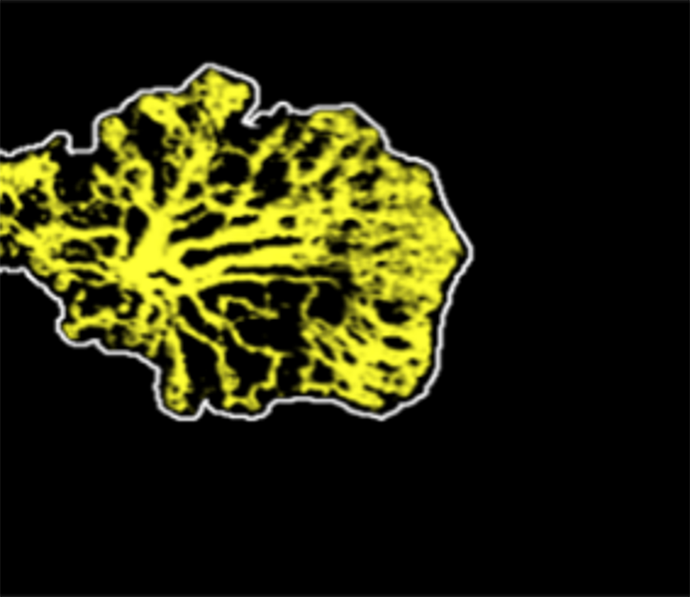
Choroidal neovascularization can be imaged even before exudation occurs in age-related macular degeneration (AMD). Such lesions can be automatically segmented using deep learning.4
4 Wang J, et al. Biomed Opt Express. 2020; 11(2)
Retinal artery and vein differentiation and assessment
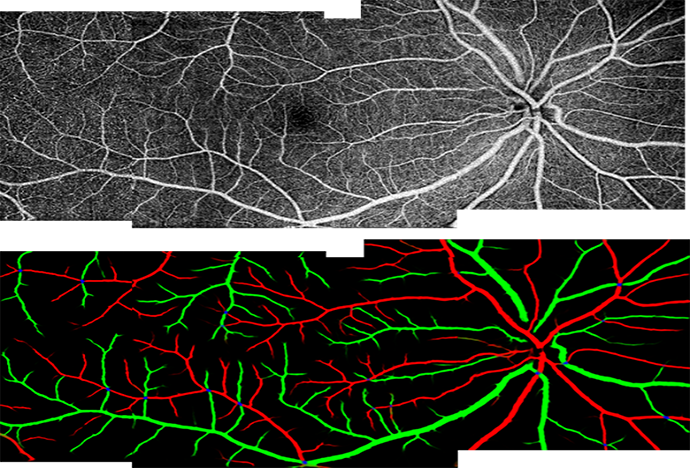
Our cutting-edge approach based on deep learning can distinguish arteries (red) from veins (green) in both macular, optic disc, and wide-field images. With this capability, common OCTA metrics such as vessel density and tortuosity can be measured separately for arteries and veins, illuminating disease pathophysiology.5
5 Gao M, et al. Ophthalmol Science. 2022
Artificial intelligence disease grading and activation map
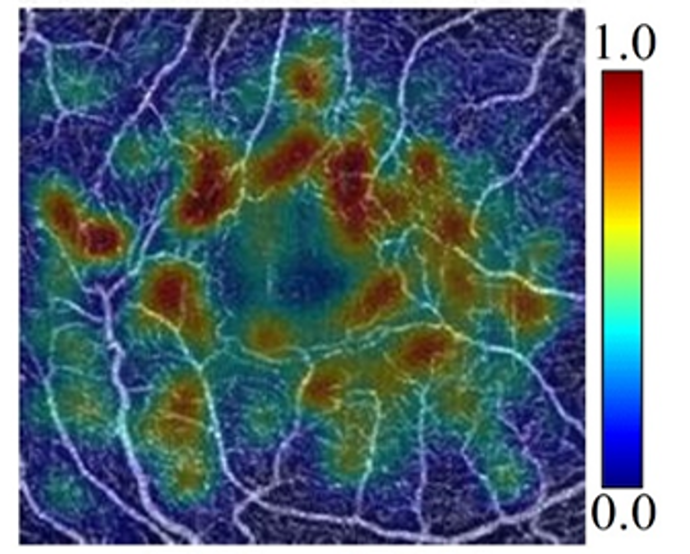
Diabetic retinopathy severity is determined by noting the presence and the extent of several pathologic features. But with deep learning methods diabetic retinopathy can also be staged directly from OCTA data volumes without appealing to specific biomarkers. Our innovative model is not only highly accurate, but also produces novel biomarker activation maps that highlight pathologic features and can help clinicians verify algorithm output.6
6 Zang P, et al. IEEE Trans Biomed Eng. 2021;68(6)
- Key Personnel
- Data quality
- Publications
- News
Key Personnel
Founders

David J. Wilson, M.D., Founder
Dr. Wilson is Professor Emeritus of Ophthalmology at OHSU and former director of the Casey Eye Institute. Dr. Wilson’s research involves study of the pathophysiology of eye disease. He has a particular interest in oncology, inherited retinal disease and gene- and cell-based therapies.

Richard G. Weleber, M.D., Founder
Dr. Weleber was a Professor of Ophthalmology at OHSU Casey Eye Institute and chief of the ophthalmic genetics division.
Key Personnel

Hiroshi Ishikawa, M.D., Medical Director
Dr. Ishikawa is a Professor of Ophthalmology at OHSU Casey Eye Institute. He has over 25 years of research experience in image processing for ocular imaging devices (i.e. optical coherence tomography (OCT), ultrasound biomicroscopy (UBM)) and machine learning applications in clinical ophthalmology.
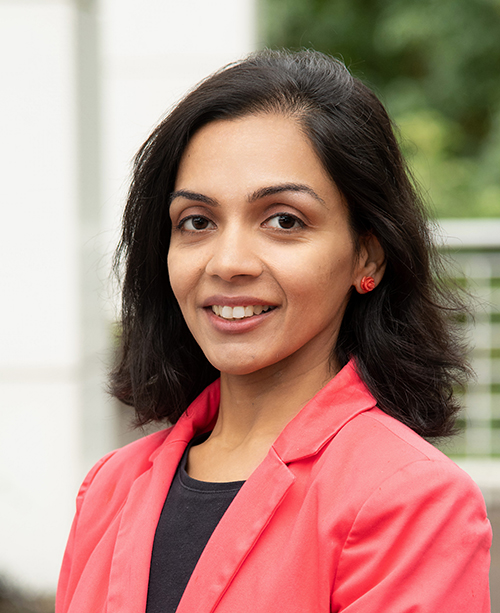
Shobana Aravind, Ph.D., BS Pharm, CCRP, Director of Operations
Dr. Aravind has over 15 years of experience in clinical research administration, conduct of clinical trials and pharmaceutical product development. Data quality and data management have been her particular areas of expertise.

Yali Jia, Ph.D., Key Personnel
Yali Jia, PhD is an Associate Professor of Ophthalmology and Biomedical Engineering, Jennie P. Weeks Professor of Ophthalmology and associate director of the Center for Ophthalmic Optics and Lasers at OHSU.
Her research interests include optical coherence tomography (OCT), OCT angiography, and retinal imaging
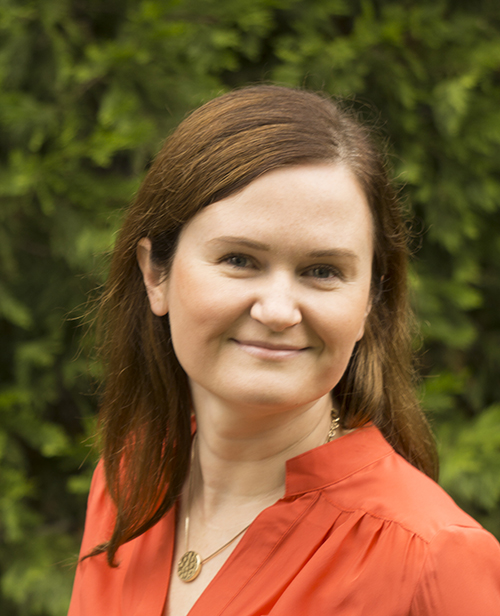
Maria Parker, M.D., Key Personnel
Dr. Maria Parker is a Research Assistant Professor of Ophthalmology at OHSU Casey Eye Institute. She is a certified reader for the reading center, and she has led and contributed to a number of research projects that have furthered understanding of how to utilize ophthalmological testing to assess safety and efficacy in gene therapy trials.
Dr. Parker's research interests include ophthalmic genetics, gene therapy for retinal and corneal pathologies, ocular imaging, and development and validation of novel parameters for use in clinical trials.
Data quality
Publications
News
Contact us
The Casey Reading Center looks forward to working with sponsors from the inception of a clinical trial through its conclusion to provide the best experience possible in obtaining verified data. Thank you for your interest in the Casey Reading Center.
Please send new inquiries to:
Shobana Aravind, Ph.D.,
Associate Director of the Casey Reading Center
Email: aravind@ohsu.edu
General support: readingcenter@ohsu.edu
Phone: 503 418-2189